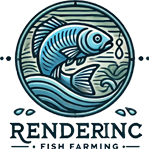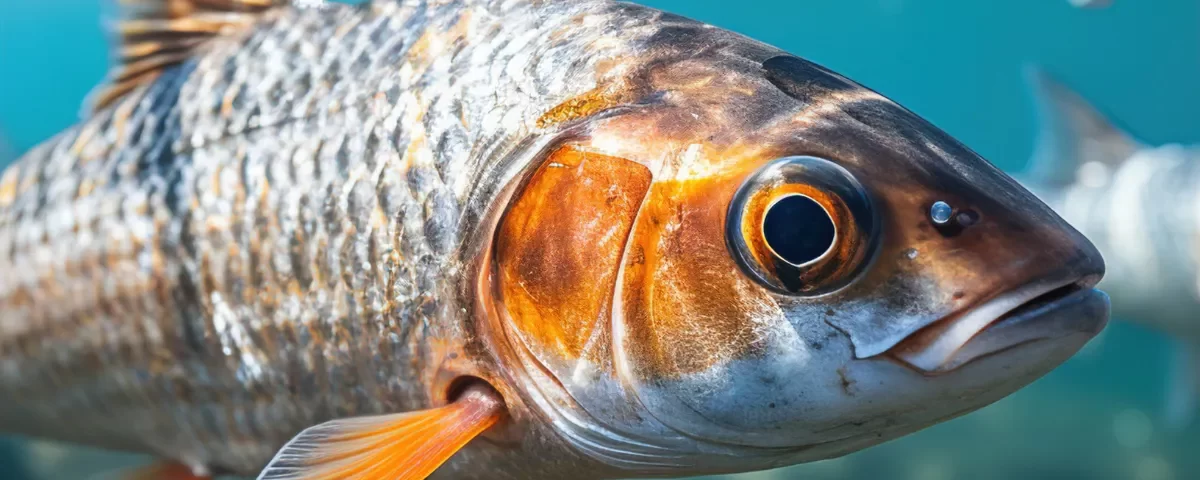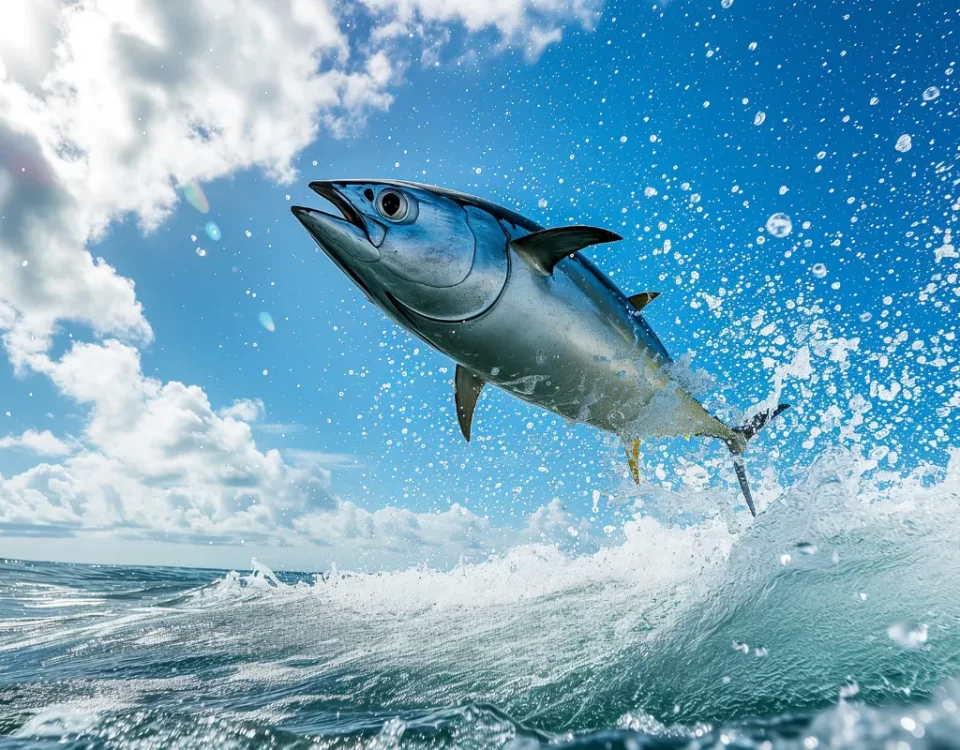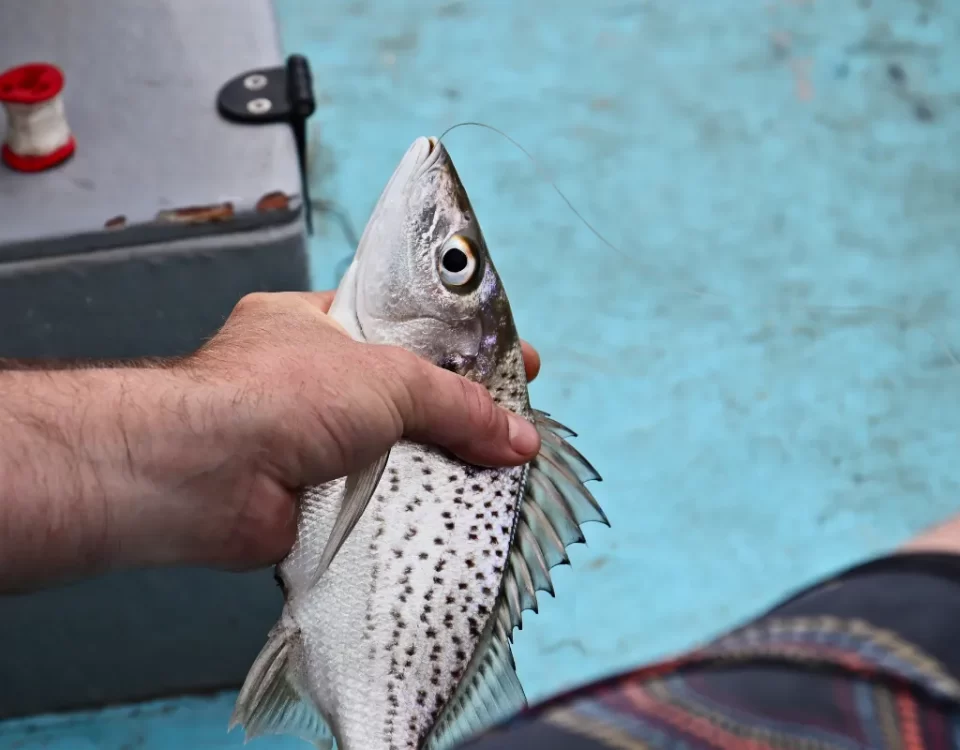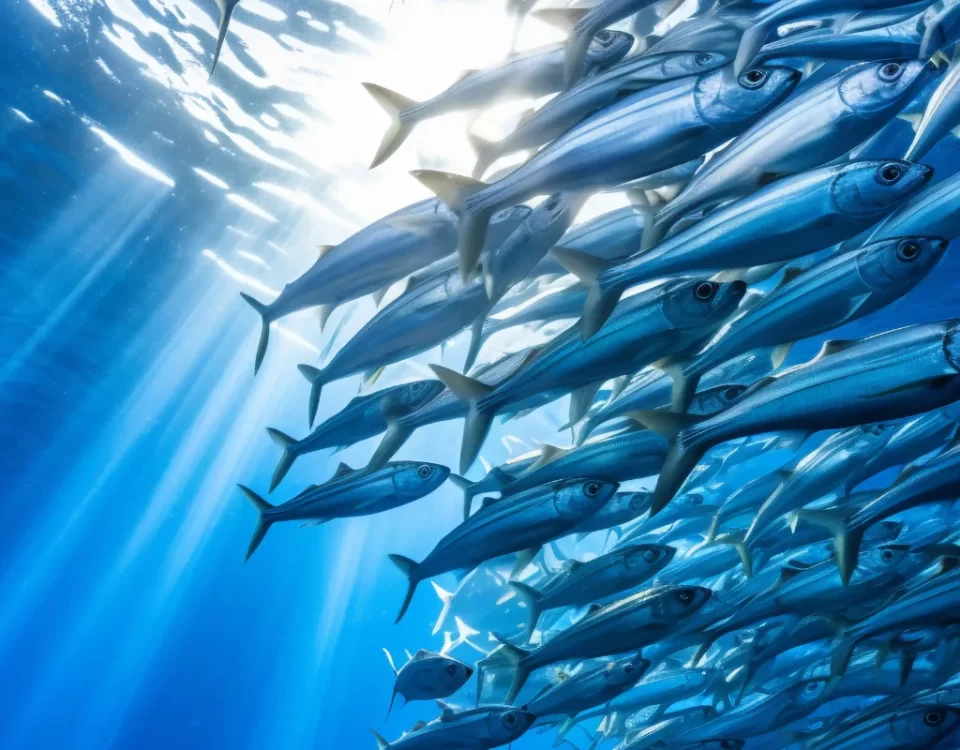Balancing Ecosystems in Aquaculture for Maximum Sustainability

How to Achieve Eco-Friendly Fish Farming Practices
August 20, 2024
How to Monitor Fish Growth and Optimize Production
August 22, 2024Aquaculture, the practice of cultivating fish and other aquatic organisms, has become vital in meeting the growing demand for seafood due to overfishing and declining wild fish populations. However, balancing ecosystems in aquaculture is crucial for long-term sustainability. By maintaining a delicate equilibrium within aquaculture systems, we can ensure that the natural environment is not compromised and that the industry remains viable for future generations.
Importance of Balancing Ecosystems in Aquaculture
Balancing ecosystems in aquaculture is essential to prevent detrimental effects on surrounding environments. Unregulated aquaculture practices, such as overfeeding and excessive use of antibiotics, can lead to water pollution, habitat destruction, and the spread of diseases to wild fish populations. When ecosystems are not in balance, the entire aquatic environment suffers, jeopardizing the health of aquatic species and disrupting the natural food chain.
Impact of Aquaculture on Ecosystems
Aquaculture can have both positive and negative impacts on ecosystems. On one hand, it provides a sustainable alternative to wild-caught fish, helping reduce pressure on overexploited fisheries. On the other hand, improper aquaculture practices can lead to nutrient pollution, habitat degradation, and the introduction of non-native species, posing serious threats to biodiversity and ecosystem health.
Thesis Statement: Maximizing Sustainability in Aquaculture
Maximizing sustainability in aquaculture is imperative for the continued success of the industry and the conservation of natural resources. By implementing environmentally-friendly practices, such as using natural feeds, managing waste responsibly, and monitoring water quality, aquaculture can minimize its ecological footprint and contribute to the overall health of aquatic ecosystems. Emphasizing sustainability in aquaculture not only ensures the long-term viability of the industry but also promotes the health and resilience of our planet’s aquatic environments.
The Role of Biodiversity in Aquaculture
When delving into the intricate world of aquaculture, biodiversity emerges as a cornerstone for maintaining healthy ecosystems. The interplay of various species within aquatic environments not only mirrors the delicate balance of nature but also holds the key to sustainability in fish farming practices. Biodiversity in aquaculture refers to the rich tapestry of different living organisms coexisting in a harmonious environment, contributing to the overall health and resilience of the system.
Importance of Biodiversity
The importance of biodiversity in aquaculture cannot be overstated. A diverse array of organisms plays vital roles in nutrient cycling, waste assimilation, and overall ecosystem stability. Different species contribute uniquely to the ecological balance, ensuring that no single element dominates the system and causes imbalance. By fostering a diverse community of plants, fish, and microorganisms, aquaculturists can mimic natural ecosystems and enhance the biological robustness of their operations.
Species Diversity in Aquaculture
In the realm of aquaculture, various species take center stage, each with its own characteristics and ecological footprint. From popular choices like salmon and tilapia to lesser-known species such as kelp and shellfish, the diversity within aquaculture systems offers a plethora of options for farmers. However, the selection and management of species must be thoughtfully considered to prevent the disruption of existing ecosystems and promote overall biodiversity.
Benefits of Promoting Biodiversity
Promoting biodiversity in aquaculture operations yields a multitude of benefits, both for the environment and for sustainable production practices. A diverse ecosystem is more resilient to external pressures such as disease outbreaks or environmental changes, making it less susceptible to catastrophic events. Furthermore, diverse species can complement each other’s roles, leading to improved nutrient cycling, disease control, and overall system efficiency. By prioritizing biodiversity, aquaculturists can create balanced, self-regulating ecosystems that enhance the long-term viability of their operations.
Managing Water Quality for Ecosystem Balance
Water quality management is crucial in aquaculture as it directly impacts the health and growth of aquatic organisms. Maintaining optimal water quality is essential for ensuring a healthy and sustainable aquaculture operation. Poor water quality can lead to stress, diseases, and even mortality among the cultured species, ultimately affecting the overall ecosystem balance. Therefore, proactive management of water quality parameters is key to successful aquaculture practices.
Water pollution poses a significant threat to aquatic ecosystems in aquaculture. Factors such as excessive nutrients, chemical contaminants, and sediments can disrupt the delicate balance of the ecosystem. Nutrient runoff from fertilizers or untreated waste can cause algae blooms and oxygen depletion, leading to eutrophication and fish kills. Chemical pollutants, such as pesticides or heavy metals, can bioaccumulate in aquatic organisms, further impacting the food chain and human health. Effective water quality management is essential to mitigate these risks and protect the ecosystem.
To maintain optimal water quality in aquaculture systems, several strategies can be implemented. Regular monitoring of water parameters such as dissolved oxygen, pH, ammonia, and nitrate levels is essential to detect any fluctuations or potential issues early on. Proper filtration and aeration systems can help enhance water quality by removing waste and improving oxygenation. Implementing sustainable practices such as recirculating aquaculture systems can minimize water usage and nutrient discharge, promoting a more controlled environment. Natural solutions like wetlands or constructed wetlands can also be utilized to filter and purify water before it re-enters the ecosystem, enhancing overall water quality and ecosystem health. By incorporating these strategies, aquaculture practitioners can effectively manage water quality to achieve ecosystem balance and maximize sustainability.
Integrated Multi-Trophic Aquaculture (IMTA)
Integrated Multi-Trophic Aquaculture, commonly known as IMTA, is a sustainable aquaculture approach that aims to mimic natural ecosystems by cultivating multiple species in close proximity. In an IMTA system, different species are carefully selected and raised together to create a symbiotic relationship where each organism contributes to the overall health and balance of the ecosystem. This innovative practice goes beyond traditional monoculture methods by incorporating various trophic levels, such as fish, shellfish, and seaweeds, to optimize resource utilization and minimize environmental impacts.
Role of IMTA in Balancing Ecosystems in Aquaculture
IMTA plays a crucial role in balancing ecosystems within aquaculture operations by utilizing the waste produced by one species as nutrients for another. For instance, fish generate organic matter and excess nutrients, which can be absorbed by filter-feeders like mussels or seaweeds, thereby reducing the likelihood of nutrient pollution and eutrophication in water bodies. This closed-loop system not only enhances the efficiency of resource utilization but also promotes biological diversity and ecological resilience within the aquaculture environment.
Promoting Sustainability Through IMTA
One of the key advantages of IMTA is its ability to promote sustainability by reducing environmental impacts and enhancing economic viability. By diversifying the species cultivated in aquaculture systems, IMTA improves nutrient recycling, mitigates disease outbreaks, and enhances overall system resilience. Furthermore, the cultivation of multiple species can help minimize reliance on external inputs such as antibiotics or chemical fertilizers, leading to a more environmentally friendly and cost-effective aquaculture production.
Successful Examples of IMTA Operations Worldwide
Across the globe, there are several successful examples of IMTA operations that demonstrate the effectiveness of this innovative approach in balancing ecosystems and promoting sustainability. Countries like Norway, Canada, and China have embraced IMTA practices to cultivate a variety of species, including finfish, shellfish, and seaweeds, in integrated systems. These operations showcase the potential of IMTA to not only increase productivity and profitability but also to minimize environmental footprints and contribute to the long-term sustainability of aquaculture.
Implementing Sustainable Feed Practices
Sustainable feed practices hold paramount importance in the realm of aquaculture when aiming to achieve maximum sustainability. Traditional feed sources, predominantly composed of fishmeal and fish oil, have raised concerns over their environmental impact due to overfishing of wild stocks and potential disruption of marine ecosystems. By embracing sustainable feed practices, aquaculturists can not only mitigate negative consequences but also promote a healthier symbiosis between aquaculture and the environment.
Importance of Sustainable Feed Practices in Aquaculture
The utilization of sustainable feed practices in aquaculture minimizes the reliance on finite resources such as wild-caught fish for feed production. Opting for alternative feed sources like insect meal, algae, and plant-based proteins not only lessens the pressure on oceanic ecosystems but also reduces the carbon footprint of aquaculture operations. Sustainable feeds are designed to provide essential nutrients for farmed fish while promoting ecological balance within aquaculture systems.
Exploring Alternative Feed Sources and their Impact on Ecosystem Balance
Innovations in aquafeed technology have introduced a wide array of alternative feed sources that revolutionize the way we nourish farmed fish. Insect meal, for instance, is gaining traction as a protein-rich feed ingredient that can be sustainably produced using organic waste materials. Similarly, algae-based feeds offer a nutrient-dense solution that not only benefits fish health but also contributes to maintaining a harmonious ecosystem balance by reducing the need for fishmeal derived from wild-caught fish. By embracing these alternative feed sources, aquaculturists can pave the way for a more sustainable and ecologically responsible future.
Tips for Aquaculturists to Reduce Reliance on Traditional Feed Sources
Aquaculturists can take proactive steps to reduce their reliance on traditional feed sources and transition towards a more sustainable feed regimen. Diversifying feed sources is key, as it not only enhances the nutritional profile of farmed fish but also minimizes the environmental impact of feed production. Moreover, investing in research and development to explore novel feed formulations tailored to the specific dietary needs of different fish species can optimize feed efficiency and reduce waste. Collaborating with sustainable feed suppliers and staying abreast of industry trends can also provide aquaculturists with a competitive edge in adopting cutting-edge feed practices that uphold ecosystem balance and promote long-term sustainability.
Promoting Natural Predation for Ecosystem Health
Role of Natural Predators in Ecosystem Balance: In the intricate dance of the aquatic world, natural predators play a crucial role in maintaining balance within aquaculture systems. These predators help control the population of prey species, preventing overpopulation that can lead to ecological imbalances. By preying on smaller fish or marine organisms, natural predators help regulate the ecosystem, ensuring that no single species becomes dominant to the detriment of others. Their presence creates a dynamic equilibrium that fosters a healthier and more sustainable environment for all species involved.
Benefits of Introducing Natural Predators:
1. Enhanced Biological Control: When natural predators are introduced into aquaculture settings, they act as biological controllers by keeping prey populations in check. This reduces the need for human interventions such as chemical pesticides or artificial methods of pest control, promoting a more environmentally friendly approach to managing ecosystem health.
2. Increased Biodiversity: The introduction of natural predators can lead to a richer and more diverse ecosystem in aquaculture systems. As they target specific prey species, they prevent any one species from dominating the ecosystem, allowing for a more balanced and varied community of organisms to thrive.
Challenges and Concerns Associated with Promoting Natural Predation:
1. Potential Disruption of Aquaculture Operations: Introducing natural predators into aquaculture systems may disrupt existing farming practices, especially if the predators target commercially valuable species. This can lead to financial losses for aquaculture farmers and may require careful planning and management to mitigate potential conflicts.
2. Balancing Predator-Prey Dynamics: Striking a delicate balance between predator and prey populations is essential in promoting natural predation within aquaculture systems. Over- or under-predation can have cascading effects on the entire ecosystem, impacting the overall health and stability of the aquaculture environment. Constant monitoring and adjustment may be necessary to maintain a sustainable equilibrium.
In conclusion, while promoting natural predation in aquaculture can bring numerous benefits for ecosystem health, it requires thoughtful consideration and management to address potential challenges and ensure a harmonious coexistence between predators, prey, and human activities within the system.
Monitoring and Mitigating Environmental Impacts
Ensuring the sustainability of aquaculture practices necessitates a diligent focus on monitoring and mitigating environmental impacts. Continuous surveillance of the ecosystem is crucial to maintain a balance that supports both the aquatic life being farmed and the surrounding environment. From the discharge of excess nutrients to the use of antibiotics, various activities in aquaculture can have adverse effects on the ecosystem if left unchecked.
Need for Continuous Monitoring
Aquaculturists must recognize the dynamic nature of aquatic environments and the interconnected relationships within them. Monitoring environmental indicators such as water quality, sediment accumulation, and biodiversity enables early detection of any potential issues. By proactively assessing these parameters, farmers can adapt their practices to ensure they are not causing harm to the ecosystem in which they operate.
Common Environmental Challenges
Among the common environmental challenges faced by aquaculturists are eutrophication, disease outbreaks, and habitat destruction. Eutrophication, a result of excessive nutrient runoff from fish farms, can lead to oxygen depletion and harmful algal blooms. Disease outbreaks can devastate farmed fish populations and also pose risks to wild species in the vicinity. Additionally, habitat destruction through poor farm siting or improper waste disposal can disrupt the ecological balance of the area.
Strategies for Mitigation
To mitigate these negative impacts and promote ecosystem balance, aquaculturists can implement various strategies. Adopting integrated multitrophic aquaculture systems, which utilize multiple species to recycle nutrients and maximize resource use efficiency, can help reduce nutrient buildup. Proper farm siting, with consideration for water circulation and local ecology, can minimize the risk of habitat destruction. Moreover, reducing the use of antibiotics through improved husbandry practices and regular health monitoring can mitigate the development of antibiotic-resistant pathogens and protect overall ecosystem health.
As we delve deeper into the intricacies of aquaculture, it becomes abundantly clear that balancing ecosystems is not just a lofty ideal but an imperative for ensuring maximum sustainability in the long run. The delicate harmony of aquatic environments is intricately connected to the success and viability of fish farming operations. By maintaining a balanced ecosystem, aquaculturists can mitigate the negative impacts of intensive farming practices and safeguard the health of surrounding water bodies.
In this intricate web of ecological dependencies, aquaculturists and policymakers play a pivotal role in steering the industry towards sustainable practices. By implementing innovative technologies that reduce environmental footprint, enforcing regulatory frameworks that prioritize ecosystem health, and promoting responsible farming methods, they can pave the way for a more sustainable future for aquaculture. The decisions made today will reverberate through future generations, shaping the landscape of aquaculture for years to come.
To all stakeholders in the realm of aquaculture, whether fish farmers, consumers, or advocates, I issue a call to action. It is incumbent upon us to support and champion sustainable aquaculture initiatives. By choosing to source seafood from farms that prioritize environmental stewardship, by demanding transparency and accountability from the industry, and by actively engaging in conversations around sustainable practices, we can collectively work towards a future where aquaculture thrives in harmony with nature.
Let us not underestimate the power of individual choices in driving broader systemic change. By becoming conscious consumers, informed decision-makers, and ardent supporters of sustainable aquaculture, we can be catalysts for positive transformation in an industry at a crossroads. Together, we can create a more resilient, healthier aquatic ecosystem where sustainability is not just a buzzword but a guiding principle for the future of aquaculture.

Michael Rivers is an experienced aquaculture enthusiast with over a decade of hands-on knowledge in fish farming and sustainable aquatic systems. Passionate about promoting eco-friendly practices, he shares his expertise on fish breeding, water management, and the latest advancements in aquaculture technology. Through his blog, Michael aims to help both beginners and seasoned fish farmers achieve success in their ventures while contributing to the growth of sustainable food production.
